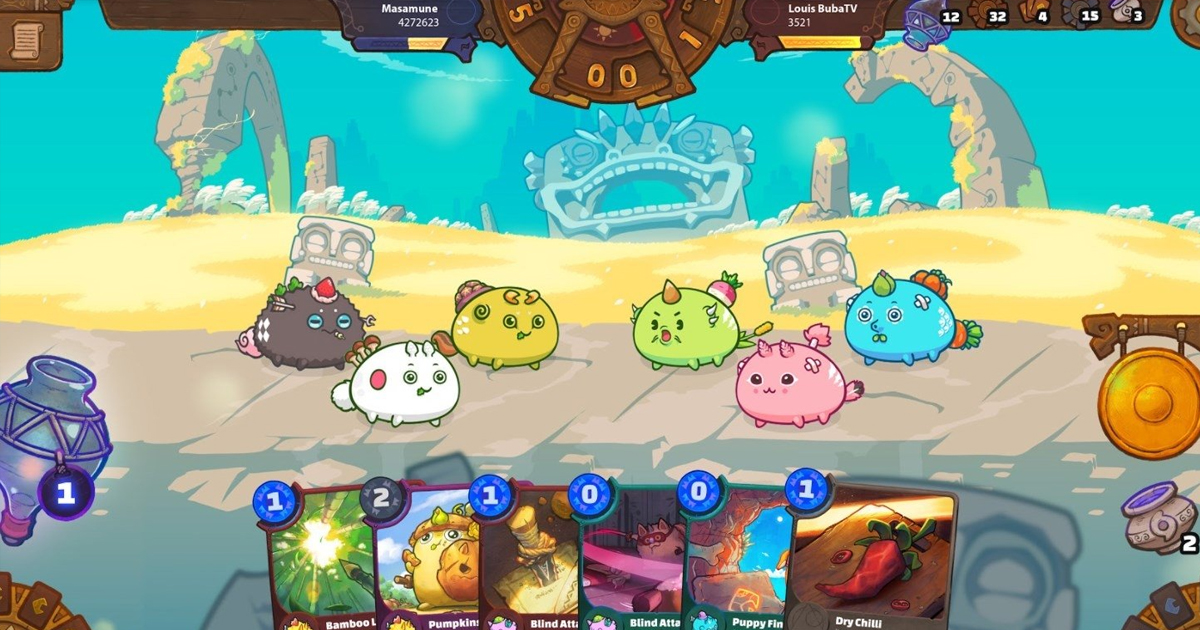What is the phenomenon of Axie Infinity — an NFT game about trading cute animals with a turnover of over $1 billion
This year, amid the growing popularity of NFT, there was a boom in decentralized games. The main hit in this market was the Vietnamese Axie Infinity, which allows you to breed and sell cute creatures. We are talking about the phenomenon of a project that has a trade turnover of over $1 billion and actually creates virtual jobs for young people.
Axie Infinity
Briefly about the game
Axie Infinity is a decentralized game created by the Vietnamese studio Sky Mavis. In it, users breed and collect “axi” creatures. One of the sources of inspiration for the project was the Pokémon franchise, but the mechanics in Axie Infinity are still different.
Each axi goes through a kind of evolution — from an egg to a full-fledged adult. The gameplay of the game consists of three main elements:
- breeding of creatures — growing eggs and crossing adult axi to obtain new ones;
- battles with other players — each axi has its own characteristics and abilities that can be used in battle. Battles here take place in a step-by-step mode and resemble card butlers;
- Axi Trading — Users can exchange their creatures on the trading platform. You can sell both adult creatures and the eggs themselves. Players can also give each other gifts and buy in-game land.
Battles in Axie Infinity
Monetization and internal currency
All major operations inside Axie Infinity are performed using special AXS tokens. They are trading around $70 apiece, and on August 11, the currency set a new high of $75.7.
Now AXS is at its peak. Over the past 90 days, the value of one token against the dollar has soared by 934%, and against Bitcoin — by 840%.
In Axie Infinity, new players do not get a starter set of creatures — they have to be bought on the trading floor for real money. In fact, each axi is a separate NFT, the ownership of which is assigned to the user.
A few months ago, it was possible to start playing Axie Infinity by investing only $5-10 in it. With the growing popularity of the project and the AXS course, the entry threshold has greatly increased. Now the cost of the simplest starting axi is $100-$200. The price of especially rare individuals can reach several thousand dollars.
Axie Infinity Marketplace
The developers of Axie Infinity do not receive all the money from the sale of axie on the trading platform. Instead, tokens are distributed among players and accumulated in a special treasury, which is the basis of the in-game economy. Users are charged a commission for internal payments and breeding of creatures (each new crossing costs more than the previous one).
However, the main component of income is the sale and purchase of land plots. This is the territory where users manage their axi, expand their possessions and collect rare resources. Gameplay this aspect of the game is somewhat reminiscent of farm simulators. Sometimes you can find AXS tokens on your land plots.
Thus, Axie Infinity has formed its own economy, built around the principle of “play to earn” (play to earn). On this basis, it falls under the definition of a metaverse, and the developers intend to develop the project in this direction.
Land plot in Axie Infinity
Axie Infinity Record Metrics
- In July, Axie Infinity exceeded all other cryptocurrencies in terms of trading turnover — including Ethereum and Bitcoin.
- Last week, the total turnover of trading operations in Axie Infinity exceeded $1 billion. This made it the highest-grossing NFT game on the market.
- In the last 30 days alone, Axie Infinity has generated 1.5 million transactions totaling $815 million.
- On August 6, the project’s DAU reached 1 million users. Although back in June, this figure was only 108 thousand players, and in July last year it was below 500 people.
- The most expensive axi in the game was a creature named Sir Gregory. It was sold for 369 ETH (about $ 819 thousand).
It’s official ????????
More than 1 M daily active players!
Let’s keep pushing, together ????$axs pic.twitter.com/1Z9ssCsFNX
— Axie Infinity???????? (@AxieInfinity) August 6, 2021
Axie Infinity phenomenon in the Philippines
Axie Infinity has become especially popular in the Philippines. Now the inhabitants of this country make up the majority of users of the NFT game. And this is largely due to the deteriorating economic situation.
In recent years, young Filipinos have become one of the fastest growing diasporas in the world. They went to countries with developed economies to earn money and feed their families. However, after the first lockdowns, many of them were left without work and were forced to return to their homeland.
This has led to high competition for jobs in the Philippines. Young people were forced to take on low-paid jobs. And suddenly Axie Infinity came to their aid, which began to gain popularity at the end of last year.
According to the BloomX cryptocurrency exchange, each user in Axie Infinity can earn an average of 4,500 thousand SLP per month (the secondary currency of the game). If we take the SLP exchange rate for July, Filipino players can bring about 2 billion local pesos (approximately $39.6 million) to the country’s economy every month.
Thus, young citizens of the Philippines massively began to retrain as professional players in Axie Inifinty. Amid the growing popularity of the project, a new term has even appeared in the country — “Filipino worker of the Metaverse” (Metaverse Filipino Worker).
Axie Inifnity has unexpectedly created new virtual jobs for Filipinos. Many young citizens choose gaming as their main activity, because they no longer need to go to work and perform grueling labor.
Some users were able to earn more money in Axie Infinity in just three months than in three years of full-time work abroad. Others even managed to buy new homes for their families.
Despite the growing popularity of Axie Infinity, the project now has its own problems. Due to the influx of players, servers often cannot cope with the load, which leads to frequent stops and forces the studio to allocate more funds for support. Tokens also used in decentralized games are still unstable. If AXS continues to grow, then SLP has lost 14.8% over the past two weeks.





